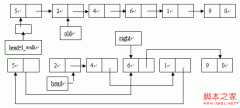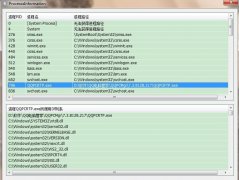马尔可夫链算法(markov算法)的awk、C++、C语言实现代码
1. 问题描述
马尔可夫链算法用于生成一段随机的英文,其思想非常简单。首先读入数据,然后将读入的数据分成前缀和后缀两部分,通过前缀来随机获取后缀,籍此产生一段可读的随机英文。
为了说明方便,假设我们有如下一段话:
假设前缀的长度为2,则我们处理输入以后得到如下数据,我们首先获取一个前缀,然后在前缀的后缀列表中随机选择一个单词,然后改变前缀,重复上述过程,这样,我们产生的句子将是可读的。
下面是处理过的数据:
前缀 后缀
show your flowcharts tables
your flowcharts and will
flowcharts and conceal
flowcharts will be
your tables and and
will be mystified. obvious.
be mystified. show
be obvious. (end)
处理这个文本的马尔可夫链算法将首先带引show your,然后随机取出flowcharts 或者table 两个单词,假设选择的是flowcharts, 则新的前缀就是your flowcharts,同理,选择table 时,新的前缀就是your table,有了新的前缀your flowcharts 以后,再次随即选择它的后缀,这次是在and 和 will 中随机选择,重复上述过程,就能够产生一段可读的文本。具体描述如下:
设置 w1 和 w2 为文本的前两个词
输出 w1 和 w2
循环:
随机地选出 w3,它是文本中 w1 w2 的后缀中的一个
打印 w3
把 w1 和 w2 分别换成 w2 和 w3
重复循环
2.awk 程序
马尔可夫链算法并不难,我们会在后面看到,用c语言来解决这个问题会相当麻烦,而用awk则只需要5分钟就能搞定。这简直就是一个演示awk优点的问题。
awk 中有关联数组,正好可以用来表示前缀和后缀的关系。程序如下:
# markov.awk: markov chain algorithm for 2-word prefixes
BEGIN { MAXGEN = 10000; NONWORD = "\n"; w1 = w2 = NONWORD }
{ for (i = 1; i <= NF; i++) { # read all words
statetab[w1,w2,++nsuffix[w1,w2]] = $i
w1 = w2
w2 = $i
}
}
END {
statetab[w1,w2,++nsuffix[w1,w2]] = NONWORD # add tail
w1 = w2 = NONWORD
for (i = 0; i < MAXGEN; i++) { # generate
r = int(rand()*nsuffix[w1,w2]) + 1 # nsuffix >= 1
p = statetab[w1,w2,r]
if (p == NONWORD)
exit
print p
w1 = w2 # advance chain
w2 = p
}
}
3. C++ 程序
该问题的主要难点就在于通过前缀随机的获取后缀,在C++ 中,我们可以借助map 来实现前缀和后缀的对应关系,以此得到较高的开发效率。
/* Copyright (C) 1999 Lucent Technologies */
/* Excerpted from 'The Practice of Programming' */
/* by Brian W. Kernighan and Rob Pike */
#include <time.h>
#include <iostream>
#include <string>
#include <deque>
#include <map>
#include <vector>
using namespace std;
const int NPREF = 2;
const char NONWORD[] = "\n"; // cannot appear as real line: we remove newlines
const int MAXGEN = 10000; // maximum words generated
typedef deque<string> Prefix;
map<Prefix, vector<string> > statetab; // prefix -> suffixes
void build(Prefix&, istream&);
void generate(int nwords);
void add(Prefix&, const string&);
// markov main: markov-chain random text generation
int main(void)
{
int nwords = MAXGEN;
Prefix prefix; // current input prefix
srand(time(NULL));
for (int i = 0; i < NPREF; i++)
add(prefix, NONWORD);
build(prefix, cin);
add(prefix, NONWORD);
generate(nwords);
return 0;
}
// build: read input words, build state table
void build(Prefix& prefix, istream& in)
{
string buf;
while (in >> buf)
add(prefix, buf);
}
// add: add word to suffix deque, update prefix
void add(Prefix& prefix, const string& s)
{
if (prefix.size() == NPREF) {
statetab[prefix].push_back(s);
prefix.pop_front();
}
prefix.push_back(s);
}
// generate: produce output, one word per line
void generate(int nwords)
{
Prefix prefix;
int i;
for (i = 0; i < NPREF; i++)
add(prefix, NONWORD);
for (i = 0; i < nwords; i++) {
vector<string>& suf = statetab[prefix];
const string& w = suf[rand() % suf.size()];
if (w == NONWORD)
break;
cout << w << "\n";
prefix.pop_front(); // advance
prefix.push_back(w);
}
}
4. c 程序
- 上一篇:C++链表倒序实现方法
- 下一篇:C++实现不能被继承的类实例分析





